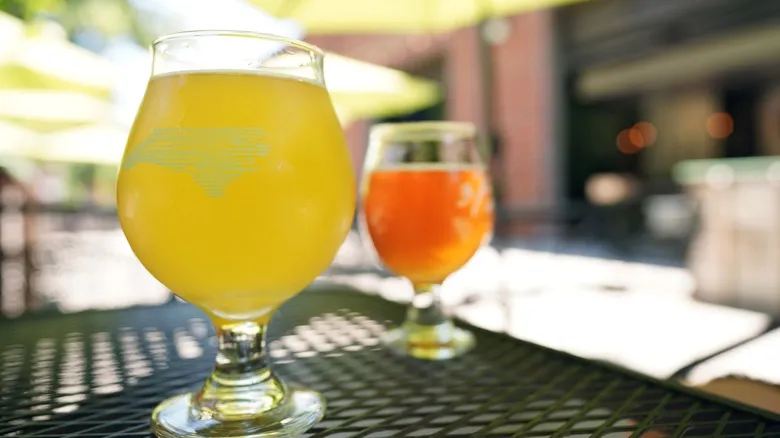What is a sour beer?

A "sour" beer is a broad category that encompasses various styles of this beverage. The unique tart flavor is a result of the brewing process, which involves live bacteria such as Lactobacillus and Pediococcus that generate lactic acid, creating a tangy or slightly fruity taste. You might recognize this tanginess from yogurt, which also owes its flavor to Lactobacillus and Pediococcus. Additionally, sour beer brewers often incorporate a wild yeast strain known as Brettanomyces (or simply Brett), commonly found on fruit skins.
During fermentation, yeast generates esters—flavor compounds that contribute to the distinct tastes of different beers. The specific type of Brett yeast used can impart fruity, citrusy, and occasionally funky flavors (in a pleasant way). Some brewers enhance these flavors by adding fruit during fermentation, while others age their sours in oak barrels to promote further microbial activity.
In addition to goses, other varieties of sour beers include Berliner Weisse, lambics, Flanders, Oud Bruin, gueuze, and American wild ales. Although there is a range of styles, they are typically light, crisp, and refreshing. Their tartness combined with a hint of sweetness makes them enjoyable, even for those who may not be avid beer drinkers.
What is a gose?

What distinguishes a gose from other sour beers? They are crafted with Lactobacillus bacteria, which imparts a pleasant sweet tartness due to lactic acid production. The primary distinction, however, lies in the addition of salt and coriander. Salt helps to reduce bitterness, while these ingredients introduce savory and floral notes that balance the bold fruitiness that can cause a pucker. Imagine the delightful interplay of salty and sweet flavors you experience when sipping a margarita with a salted rim; gose beers offer a similar taste experience in a brew. Furthermore, goses are typically not aged in oak barrels, unlike many other sour beers. Instead, they are usually produced using the kettle souring method, which employs a stainless-steel mash tun to swiftly infuse sour flavors into unfermented beer, known as wort.
A gose beer serves as an excellent introduction to the realm of sours for those who may be hesitant to try something labeled as "funky." The salt and coriander help to mellow this flavor, making it an approachable and refreshing choice, especially enjoyed on a patio during a hot summer day. Whether you're a craft beer enthusiast or a newcomer, the world of sour beers is as diverse and intriguing as that of lagers or ales. While goses are a great starting point for those new to sour beers, there are flavor profiles available to cater to a wide range of tastes.
Recommended

The State That Drinks The Most Beer Isn't California Or Texas

Why You Should Avoid Ordering Wine By The Color

Give Flat Sparkling Wine New Life By Turning It Into A Sweet Syrup

Use That Glass Of Leftover Wine To Make An Elevated Jam
Next up





